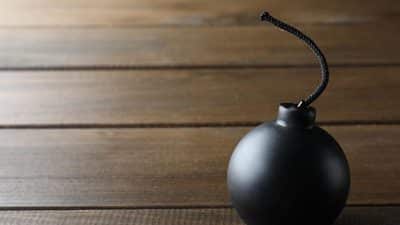
The two new village-style residences that sprang up this summer on BC’s campus do far more than simply provide housing for students. By adhering to an internationally recognized green building certification system, they move the college forward on an environmentally friendly trajectory that will result in energy savings, water efficiency and improved indoor environmental quality.
Stone Village, which is located at East College and College View streets, was constructed as a Leadership in Energy and Environmental Design Silver project. Developed by the U.S. Green Building Council, LEED provides building owners and operators a concise framework for identifying and implementing practical and measurable green building design, construction, operations and maintenance solutions.
“From the start, the college viewed Stone Village as an opportunity to provide a new housing concept on our campus – one that reflected student interests and lifestyle preferences,” said Anne B. Keeler, vice president for finance and treasurer at Bridgewater. “Our students have expressed a growing interest in sustainability and are genuinely concerned about how they and their college might make more environmentally sensistive choices.”
Keeler added that, during the initial planning for Stone Village, architects from the Greensboro, N.C.-based Moser Mayer Phoenix Associates (MMPA) solicited student and staff input about design concepts. During those meetings, said Keeler, a campus-wide interest in sustainable planning was reaffirmed.
“The industry standard for environmentally friendly building design is the LEED program, and college officials asked the design team to pursue LEED certification,” said Keeler. “We are excited about the possibility of achieving LEED recognition for the first time at Bridgewater College.”
So how do the Stone Village units – the exteriors of which resemble late Victorian residences – help the environment? From the ground up, explained Kenneth C. Mayer Jr., MMPA’s principal-in-charge. Mayer said that everything – landscaping, building materials, electrical systems and appliances – reflect a carefully thought-out respect for the environment and commitment to sustainability.
He said the landscaping has been designed so that stormwater runoff will be clean and that plants will not require potable water for irrigation; at least 20 percent of all building materials are made of recycled materials; insulation, which exceeds minimum requirements, is composed of rapidly renewable, soy-based materials; rooms are equipped with occupancy sensor lights, which turn on and off when a room is or isn’t in use; and all appliances bear an Energy Star rating.
Interior paints and adhesives are environmentally friendly and improve indoor air quality because they contain low amounts of volatile organic compounds (VOCs). And 20 percent of all materials used in Stone Village were made or harvested within 500 miles of Bridgewater College, which required less fuel and other resources for delivery.
Mayer said the LEED certification process usually takes three months after a project’s completion.
Edited by Chris Graham. Chris can be reached at [email protected].










